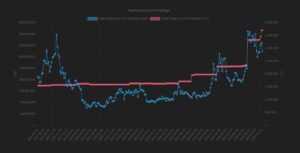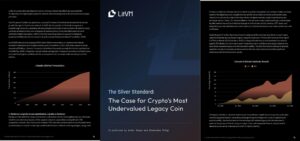A quarter of a century after declaring the death of inflation, Roger Bootle is anticipating its rebirth.
Pockets of price growth have emerged in the United States, whether it’s the cost of second hand cars to lumber as the world recovers from controversial government-led lockdown measures.
This was accompanied by financial markets reaching multi-year highs in major economies as central bankers attempt to quell inflation fears by stating that the gains are ‘transitory’. However, some economists are sounding the alarm.
Among them is Bootle, founder of Capital Economics and author of the 1996 book “The Death of Inflation: Surviving and Thriving in the Zero Era.” Back then, he argued decades of consistently high rates had come to an end.
Cryptocurrencies aren’t going away. Buy Bitcoin here.
While the veteran economist does not see a return to that era, Bootle argued in a Bloomberg interview on June 2nd that the world is on the precipice of another turning point.

Referring to FED policy, Bootle said: “It is the start of a sea change, I have to say. That’s not to say that we’re going to go back to the strong inflationary conditions of the 70s and early 80s. But at the very least, I think we are at the end of the crypto-deflationary period that we’ve been in for the last few years.
“The danger of deflation has passed, and the risks have definitely tilted in the other direction. How high inflation will go, and for how long, that’s debatable. But I’m not in much doubt myself that there’s been a sea change.”
However, Bootle does not expect inflation to be like the 1970s.
He continued:
“No, the comparison with the 1970s is not a good one. If you look at the long term history of inflation, and I’ve looked at the U.K. data going back to the 13th century, you don’t get ever a sustained period of inflation of the sort we had 1970s. You do get bursts of inflation, typically followed by much lower rates or even deflation.
“The 1970s were special. First of all, you started off at a quite a high base rate of inflation. And then several shocks appeared, two oil price shocks. The settings of monetary and fiscal policy were extremely loose. And all of this in an institutional context that was conducive to inflation — very powerful trade unions, powerful corporations, a high rate of public ownership in this country and many others.
“A closer comparison is with the 50s and 60s before the inflationary take off at the end of the 60s. We then went through a long, a prolonged period of what seemed at the time by the way to be quite high inflation — we learned subsequently it wasn’t.”
“So, to summarise, in the last month or so the official narrative has shifted from inflation will be “transitory” to “inflation is good for society”…
As Bootle explained, the main reason for this continued increase in inflation is politically justified by environmental causes.
“If I had to put my money on a single factor that was going to push up costs in the years to come, I would say it was the environmental emphasis and in particular the drive towards net-zero. This is going to lead to a whole series of costs and price increases across the economy.”
In 2017, Janet Yellen said she did not expect another financial crisis “in our lifetimes”.
In the 12 months to April, the US consumer price index (CPI) rose 4.2%, growing at the fastest rate since 2008. The numbers exceeded expectations of an average estimate for a 3.6% increase. The constant shifting of narratives (and goal posts) from the US Federal Reserve has spurred on inflationary fears, while also compounding the thesis that Central Bankers are under-estimating the consequences of their actions.
Subscribe to the semi-weekly newsletter for regular insight into bitcoin and crypto. Go on. It’s free.
Join the telegram channel for updates, charts, ideas and deals.
Did you like the article? Share it!


